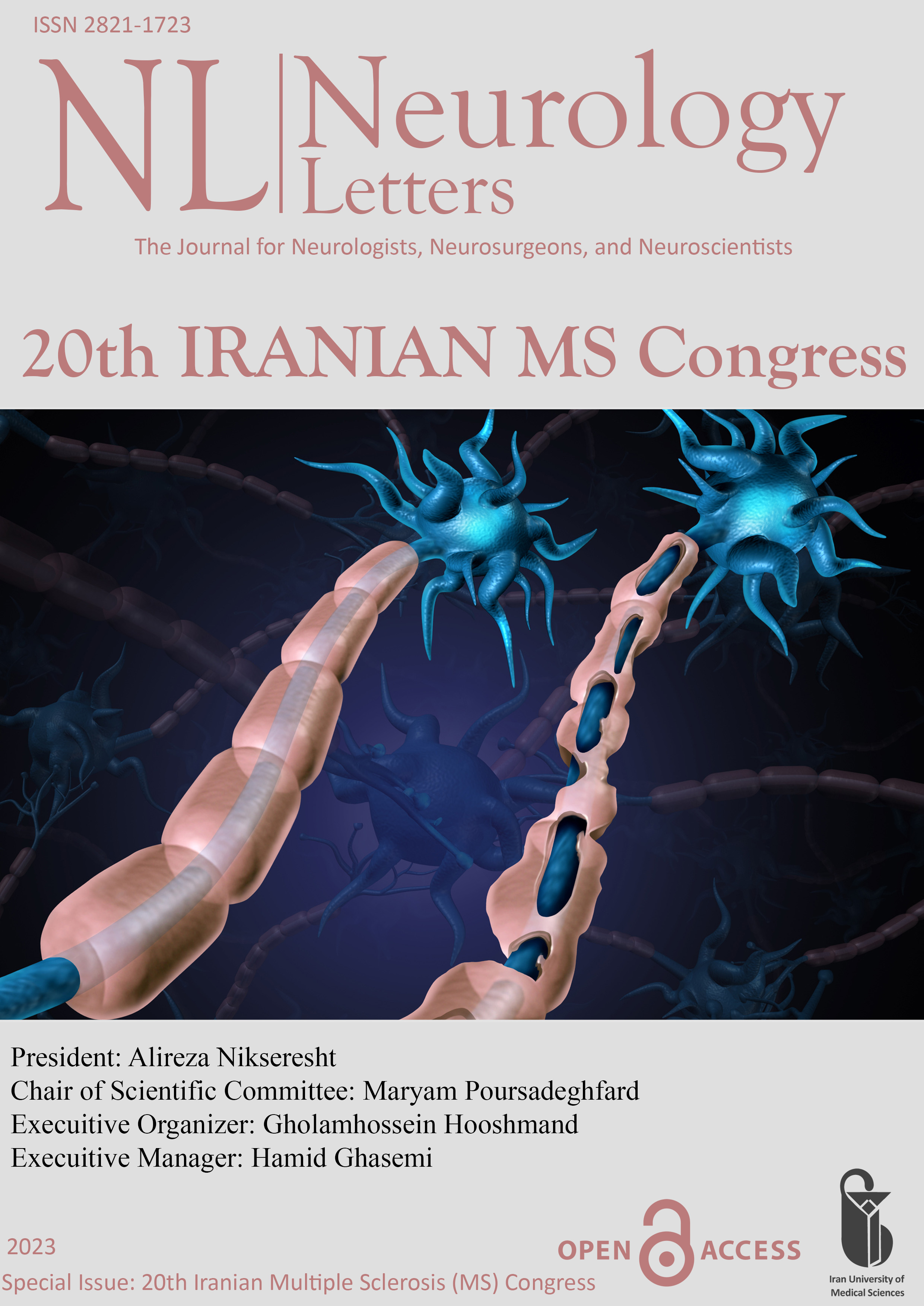EEG Patterns in MS-related epilepsy A literature Review (ORP-26)
Document Type : Oral Presentation
Author
Isfahan Neuroscience Research Center, Isfahan University of medical sciences, Isfahan, Iran
Abstract
Introduction: EEG abnormalities show variability in time and space and a low degree of specificity in patients with multiple sclerosis. However, in some cases, EEG abnormalities may provide additional information about the extent and severity of the disease. In addition to detecting the electroclinical particularities of epileptic seizures; video‑EEG and activation techniques such as hyperventilation, photic stimulation, and sleep deprivation) are important tools in detecting the abnormalities of EEG.
Methods and Materials: This study was carried out in literature in the period of 2012-2023 in the most important online databases (PubMed, Embase and Google Scholar). For this purpose, the following terms were used: ‘Multiple sclerosis’, ‘seizure’, ‘epilepsy’, ‘convulsion’, ‘Electroencephalogram’, ‘EEG patterns, and MS-related epilepsy.
Results: EEG abnormalities in MS patients depended on the location of the lesions, the duration, and the stage of the disease, its progression, and EDSS. Patients with MS and epilepsy had significantly lower posterior dominant rhythm (PDR) frequency and amplitude compared with controls, with 34% having a PDR frequency of <8.5 Hz. Frequent abnormalities consist of diffuse asynchronous theta activity, slow rhythmic synchronous activity, and occasionally, mainly during chronic‑progressive disease evolution, low voltage, occasionally, slow focal waves or localized EEG suppression may be found. These abnormalities are about 20-60% according to previous studies. However, interictal epileptiform activity appears to be quite rare. In Table 1, the most relevant EEG patterns found in patients with MS with epilepsy is summarized.
Discussion: Seizures are not a common symptom of MS. The cumulative incidence of epilepsy was 3.5% for patients with MS, compared with 1.4% for the control group. EEG abnormalities are more common in MS-related epilepsy than MS without seizures. EEG abnormalities in MS patients may include changes in the frequency and amplitude of the tracing, as well as abnormal patterns of activity in certain areas of the brain. Most of MS patients showed normal EEG. Abnormal patterns were detected in patients with active MS or in advanced stages of the disease and the potential result of the variable degree of cortical atrophy. Several studies have commented on EEG abnormalities in MS patients with seizures. Interpretation of these studies is difficult, as the timing of EEG in relation to seizure and in relation to the onset of epilepsy varies both within and among studies. In general, these studies identified EEG abnormalities in most patients with seizures. However, no available data support whether similar abnormalities in EEG would be present in MS patients without a history of seizures. These studies have important methodological differences that could easily account for the different frequencies of epileptiform EEG findings that they report. Periodic Lateralized Epileptiform Discharges (PLEDs) are seen in a variety of disorders, including in association with MS exacerbations. These have been associated with clinical manifestations of altered consciousness or prolonged aphasia, resulting from prolonged complex and simple partial status epilepticus and focal motor seizures followed by secondarily generalized seizures.
Conclusion: Generalization from the available data is limited to the statement that most patients do have abnormalities identified on EEG and no single EEG abnormality has been identified that would suggest MS as the etiology for epilepsy in the absence of clinical or radiological evidence that suggests the disease.
Keywords
 Neurology Letters
Neurology Letters
